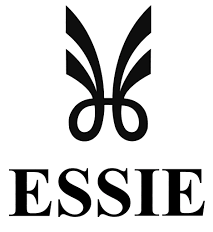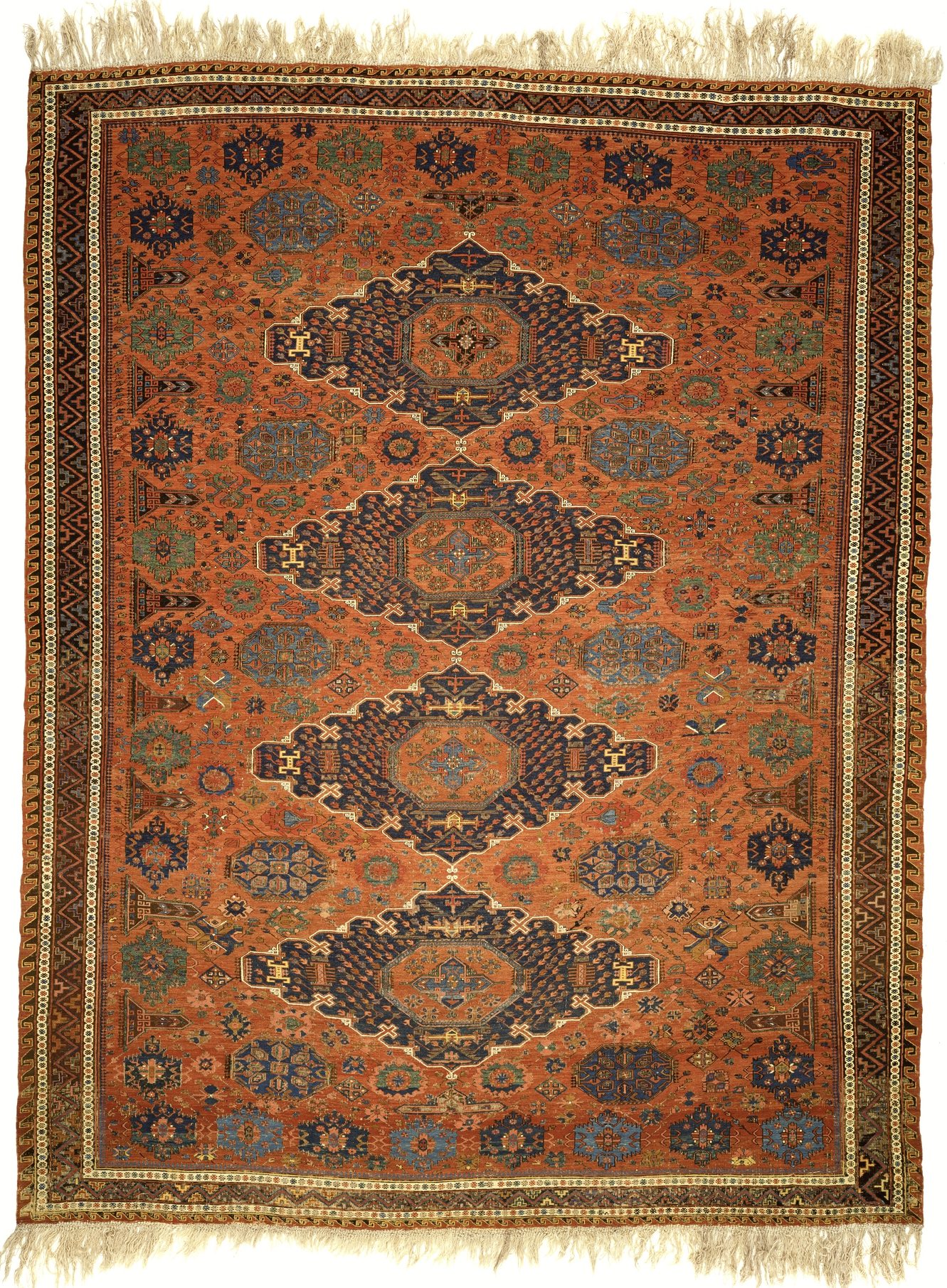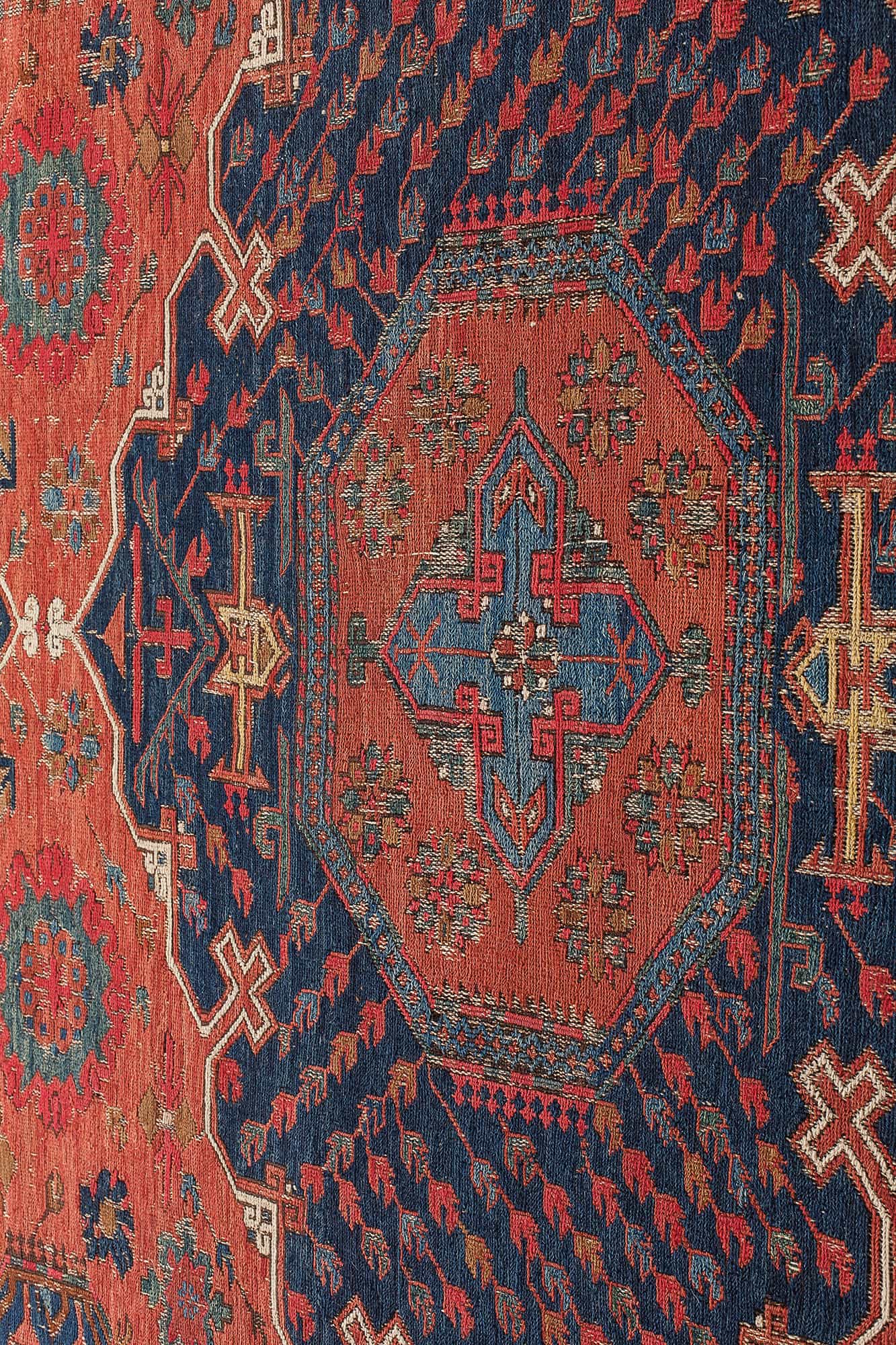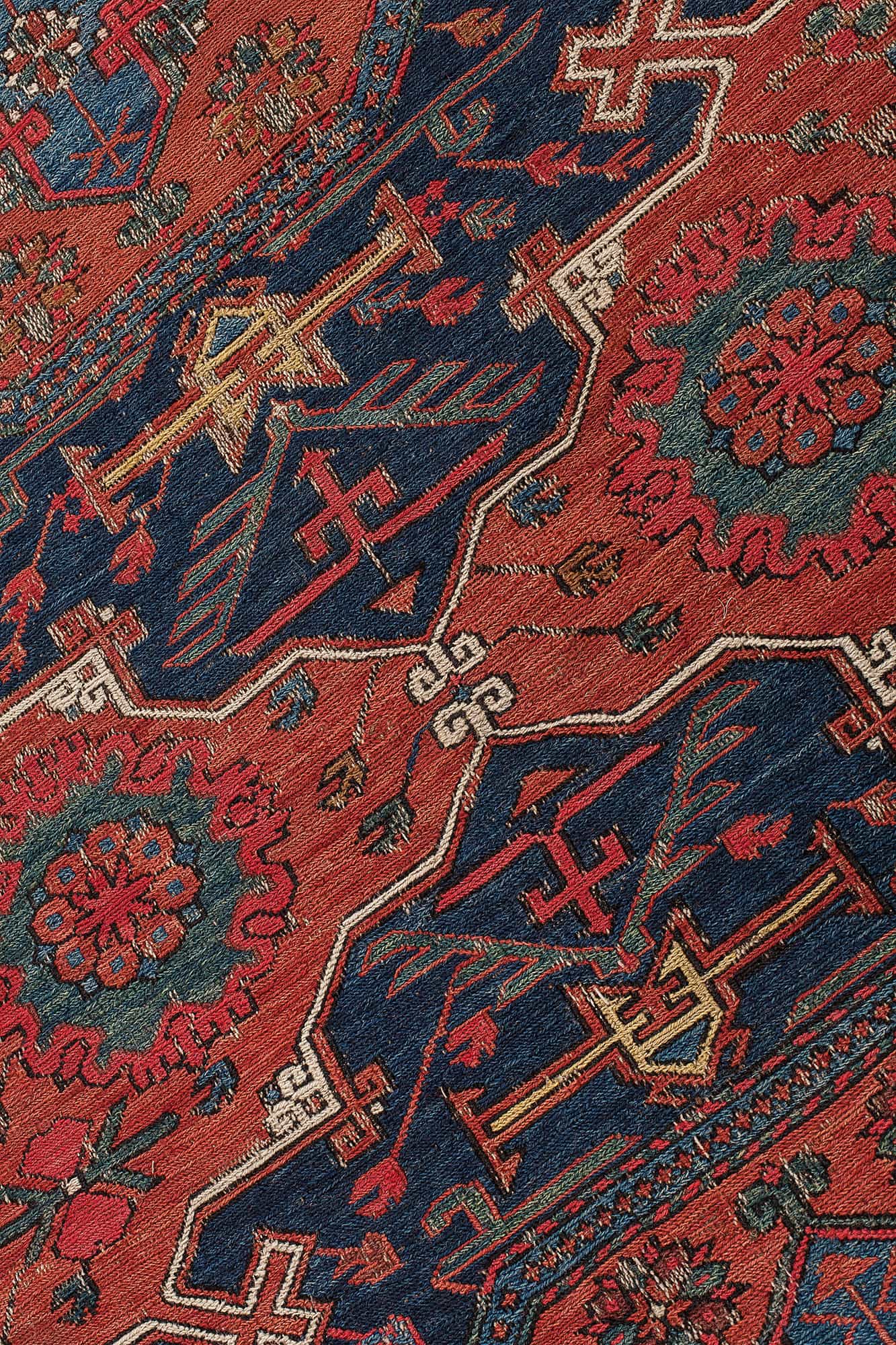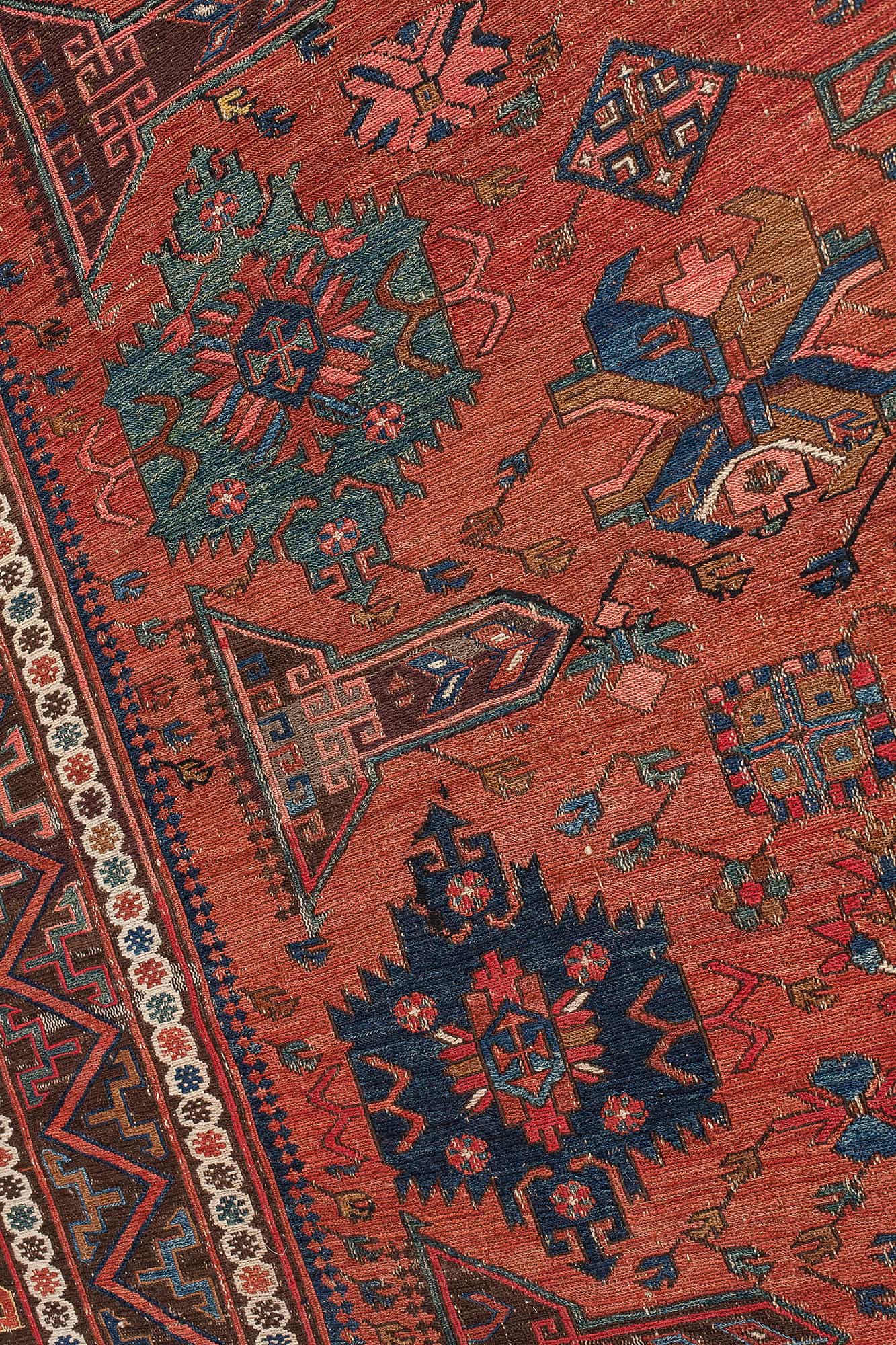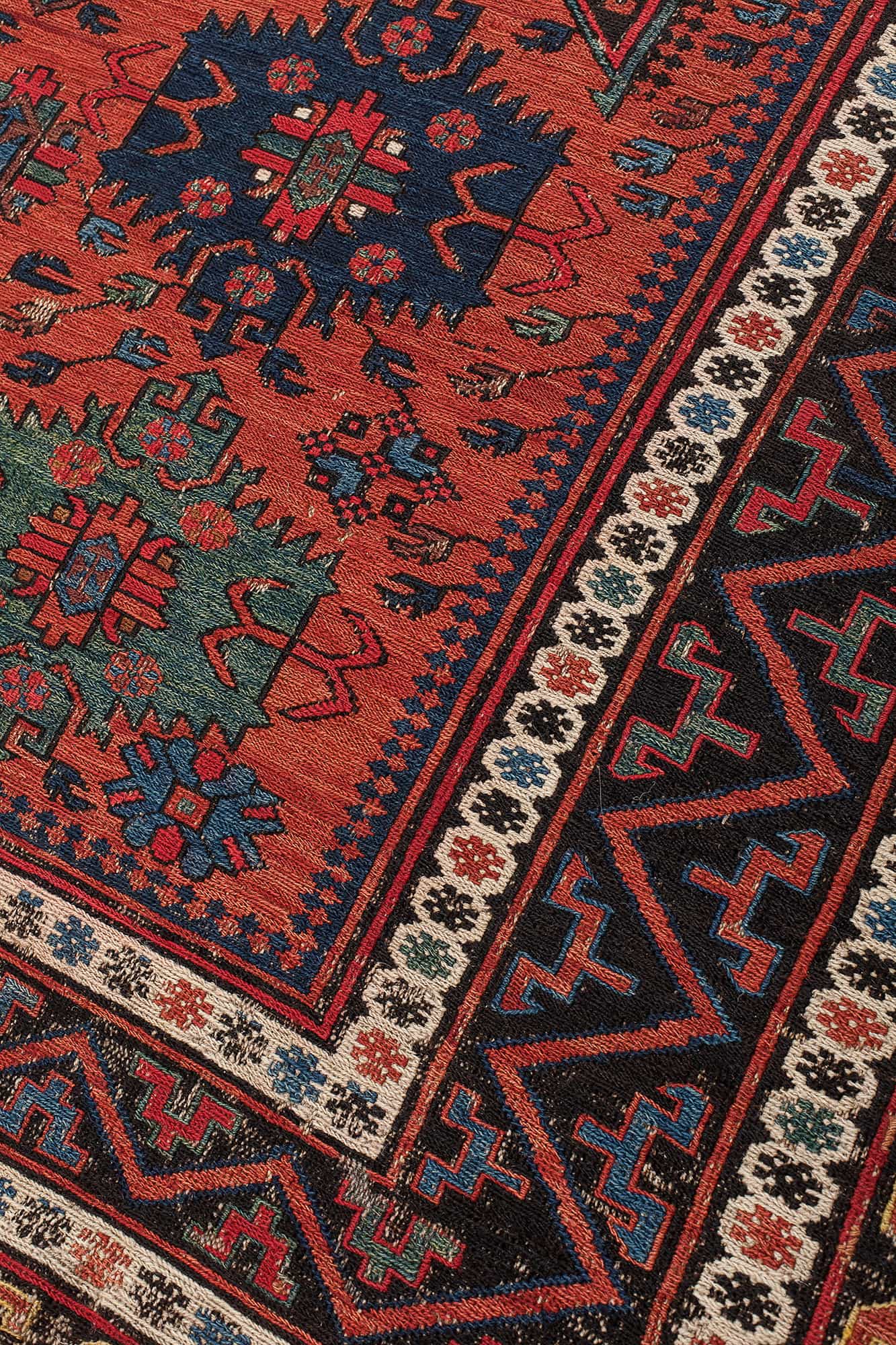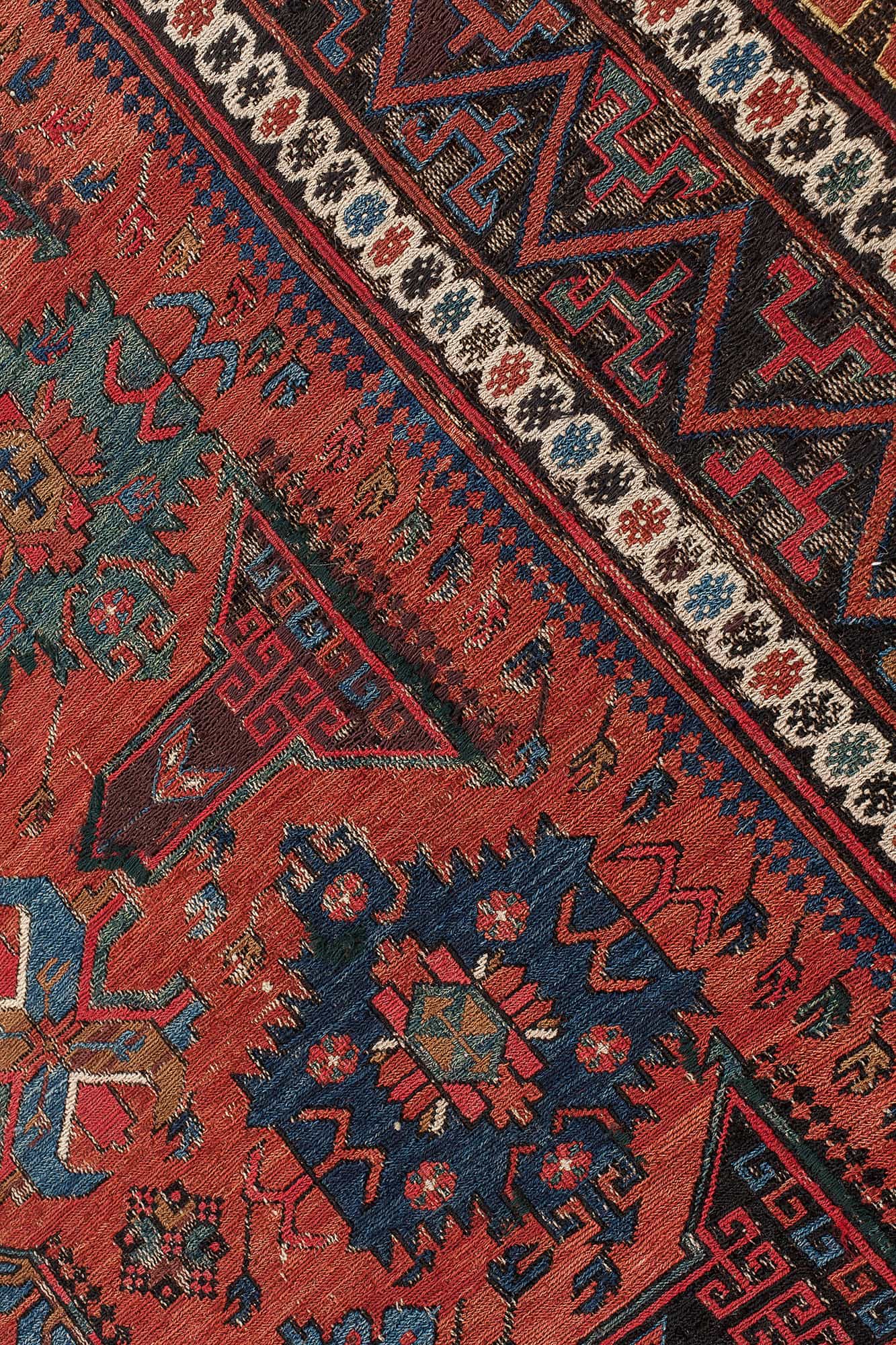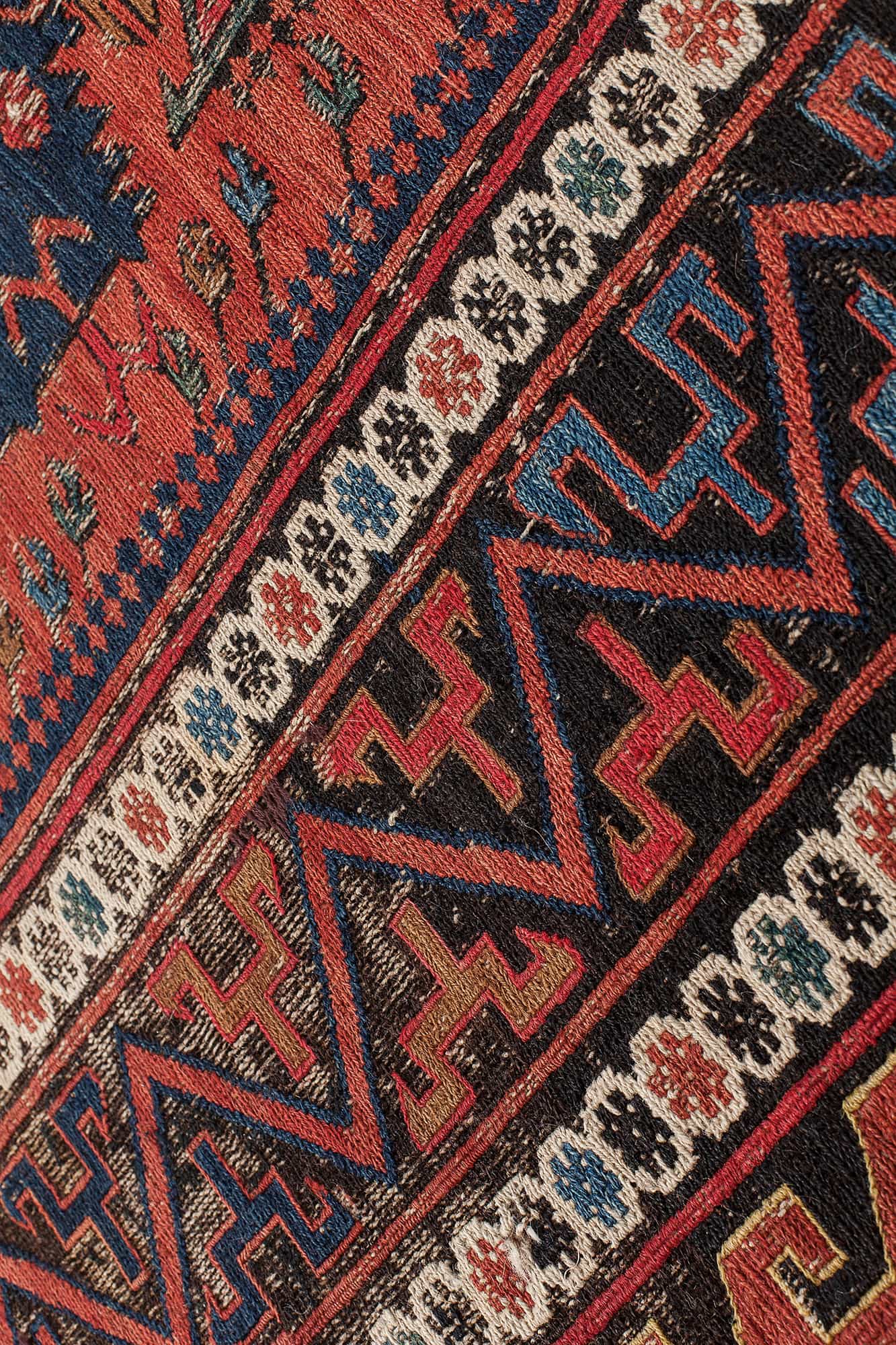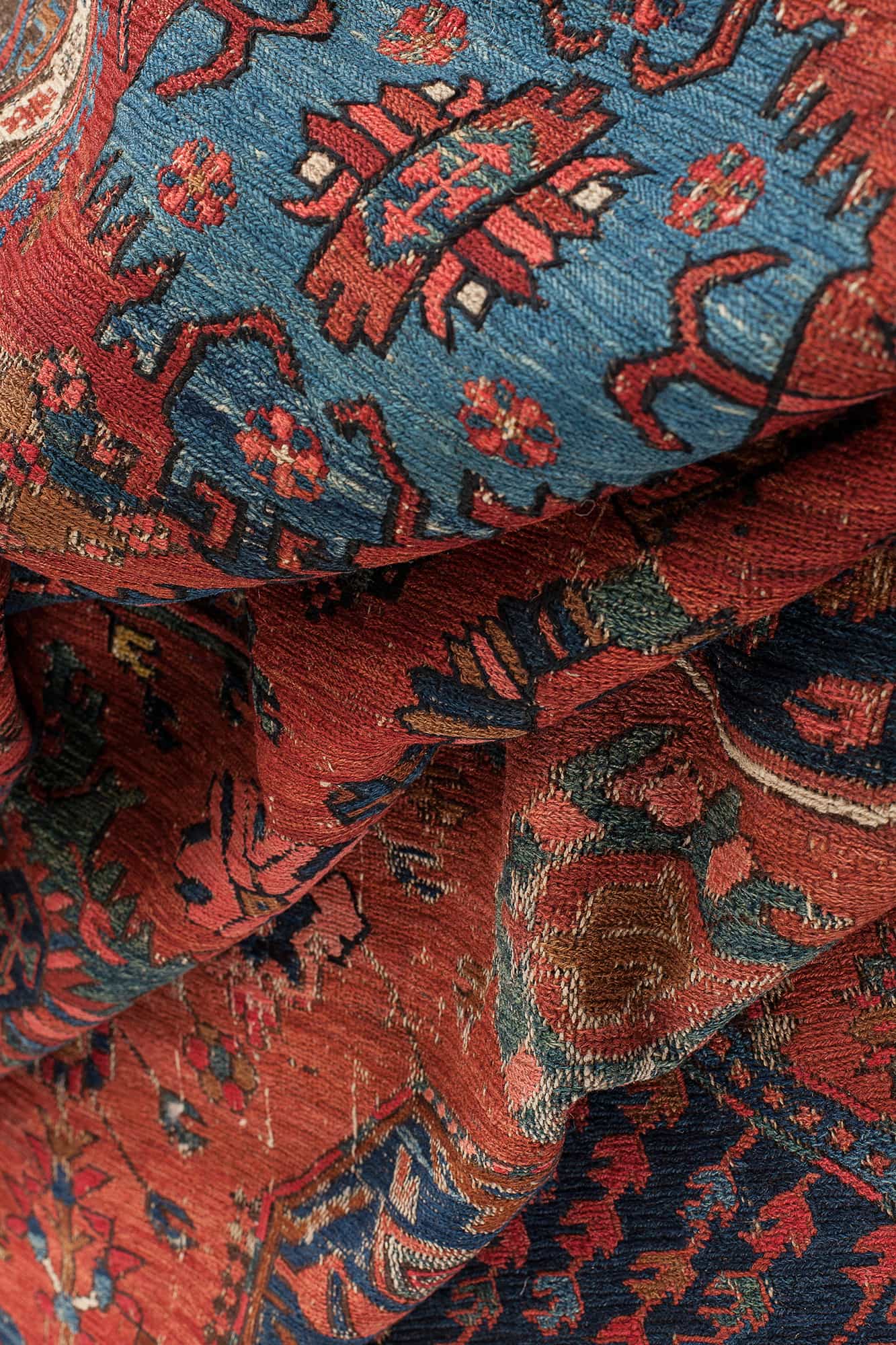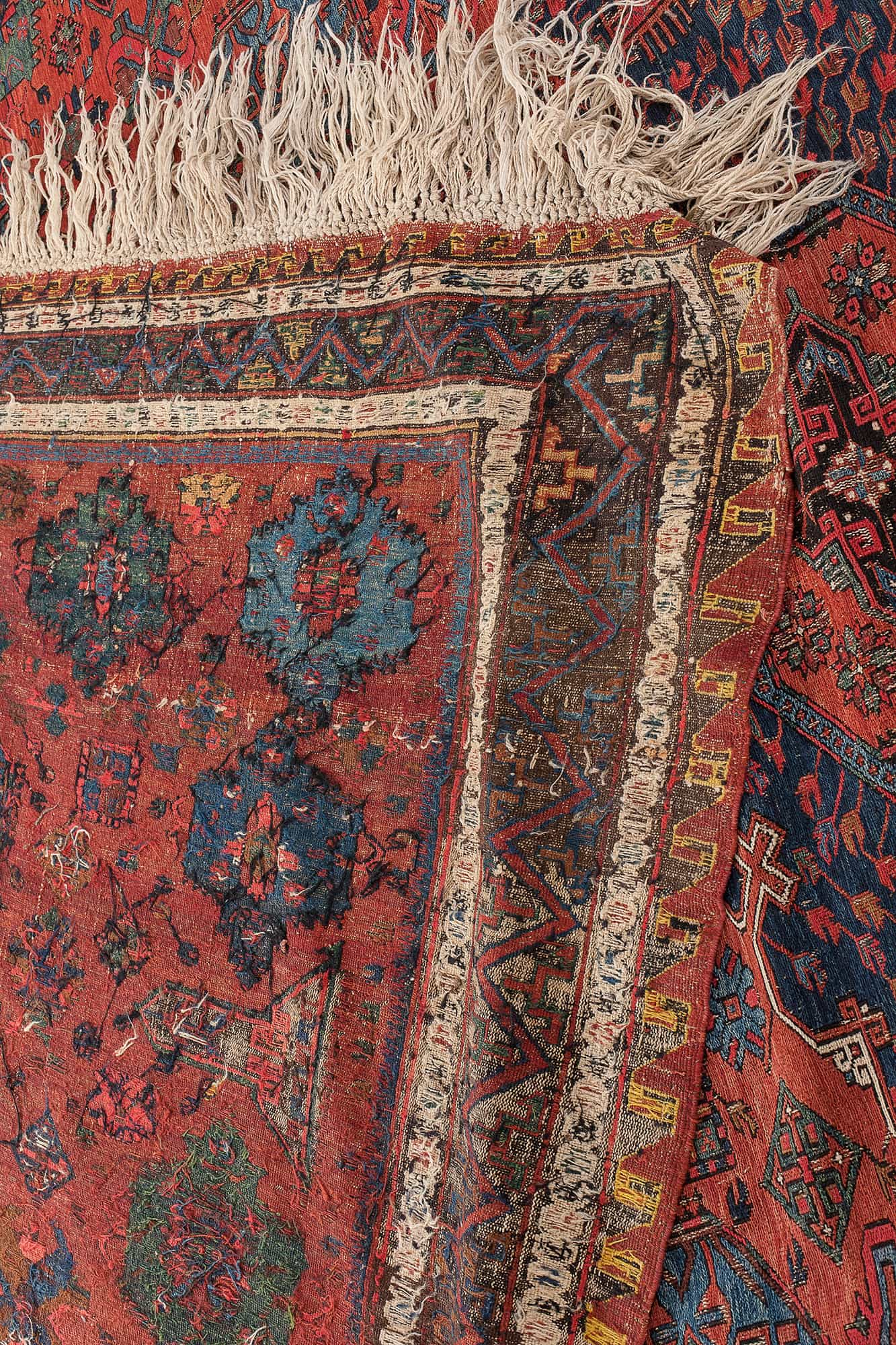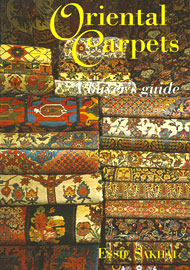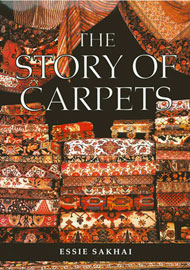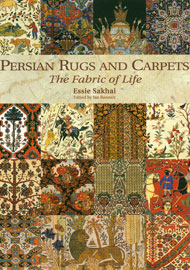Caucasian Kuba Soumac- Old
Rug #1276Old Caucasian Kuba Soumac Medallion design All Wool
This Caucasian Soumac is published in;
THE PERSIAN CARPET, ‘The Fabric of Life’, Essie Sakhai, Woodbridge, 2008.
pl. 345, p. 421.
This is a good example of one of the best know
designs associated with a group of flatwoven
carpets in the soumac technique from the eastern
Caucasus. Their exact place of manufacture remains
unknown although an attribution to the Kuba region is
generally accepted. The Azerbaijani scholar Latif
Kerimov, in Rugs & Carpets from the Caucasus – The
Russian Collections, illustrated an example, no. 40, in
the Museum of Azerbaijanian [sic] Carpets and
Handicrafts, Baku, which apparently came from a
village called Kustar near Kuba itself. However, it
seems possible that the word ‘Kustar’ in the translation
of Kerimor’s book has mistakenly been rendered as a
village, rather than as a Kustar or workshop. It is
possible that such pieces were made in many villages
in the Kuba area.The elements that make up the design
of sumacs such as this are fascinating both in
themselves and for the connections that can be made
between them and other groups of rugs. The principal
elements of the designs are fairly consistent both in
general form and in detail. The large medallions are
almost always dark blue and there are usually three on
the vertical axis; their details are also surprisingly
consistent, with the white ‘ribbon’ outlining seen here
forming small curlicue ‘knots’ in the angles and
indented crosses. A central red ground octagon is also
always found with a blue-ground cruciform in its centre
surrounded by stylised blossom forms, although, as is
usual, minor ‘filler’ ornaments can vary. One common,
though not invariable, feature consists of the sprays of
leaf-life forms coming off each central red octagon.
This is a motif found also on some Tekke Turkmen
carpets and is one of several elements found on
Caucasian sumacs and pile rugs that can also be found
on Turkmen, pre dominantly Tekke and Yomut, weavings
as well as on other tribal weavings from eastern Persia
and Afghanistan, notably that of the Baluchi. This
connection has often been noted in rug literature but
awaits a full and satisfactory explanation. However, as
with Turkmen designs, the very consistency of the
elements on the major groups of Caucasian sumacs
suggests a totemic or tribal origin. The border design
seen here is the one most commonly found on sumacs
with this field pattern.
Old Caucasian Kuba Soumac . This piece was handwoven in Kuba, Azerbaijan, East Caucasus. For further information please contact us and our team will be pleased to assist you. All pieces in the collection are under the auspices of Essie Sakhai, one of the world’s foremost experts and collectors of fine handmade Persian rugs and carpets.

Delivery
Delivery
Enjoy Complimentary Express Delivery at Checkout
Free express next-day delivery on all UK orders.
Free express delivery on all international orders above £2,000.
Estimated Delivery Times
Please allow between 1-3 days for UK, Europe and United States destinations and 5-7 days for Far East, South America, Middle East destinations.
Please note that orders placed after 12pm (UK time), on the weekend, or during holidays will be processed on the following business day. You will be provided with a shipping tracking number once your order has been shipped.
Collection from our Mayfair London showrooms
In-store collection will be ready within 1 business day. To collect in-store you will be required to show confirmation e-mail, official photo ID (passport or driving license) and the payment card used for the order. If someone else is collecting on your behalf, please make sure they bring a letter of authorisation that permits this person to collect on your behalf, official photo ID of the purchaser and of the person collecting and confirmation e-mail.

Exchanges
Exchanges
Essie Carpets offers clients a lifetime exchange service on any items purchased from us should you wish to change your carpets at any time in the future, subject to the item being in good condition; this can be particularly useful when redecorating your home, or when an upgrade in type or quality is desired.

Payment
Payment
Payments are accepted via credit card or debit card with a valid billing and shipping address*. Accepted credit cards are Visa, American Express, and Mastercard. When placing an order, your billing address must correspond to the address of your credit card, or we will not be able to process your order.
Bank Transfers are also accepted; in order to pay by Bank Transfer, please contact our Client Services via telephone at +44 20 7493 7766 or e-mail at sales@essiecarpets.com.
All transactions are secured. The Essie Carpets website is provided with an SSL encryption system to protect personal and payment data.
